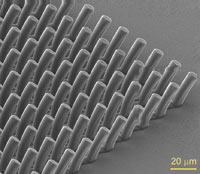We are delighted to announce a high-profile themed issue on Active Soft Matter to be published in 2011. The guest editors of the issue will be Professor Fred MacKintosh (Vrije Universiteit Amsterdam, The Netherlands) and Professor Mike Cates (University of Edinburgh, UK) and it is our pleasure to invite you to submit to this themed issue.
Now in its sixth year of publication, Soft Matter has quickly been established as the platform where biologists, colloid scientists, physicists, polymer scientists, chemical engineers, chemists, and materials scientists can present work for interdisciplinary inspiration. We have published several themed issues on other important emerging topics in recent years, and it now seems particularly timely to publish a focused set of articles covering Active Soft Matter. The key aim is to highlight the most important areas and directions in this field within a high quality and high impact issue.
The deadline for the receipt of manuscripts for this themed issue is Friday 3rd September.
Submissions, either communications or full papers, should be high-quality manuscripts of original, unpublished research, containing important new insight. All submissions will be subject to rigorous peer review to meet the usual high standards of Soft Matter.
Manuscripts can be submitted using our online submission service. Please indicate on submission that your manuscript is intended for themed issue on Active Soft Matter.











